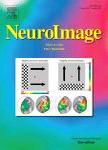版权所有:内蒙古大学图书馆 技术提供:维普资讯• 智图
内蒙古自治区呼和浩特市赛罕区大学西街235号 邮编: 010021

作者机构:UCL Dept Comp Sci London WC1E 6BT England Newcastle Univ Inst Neurosci Newcastle Upon Tyne NE2 4HH Tyne & Wear England Univ Manchester Sch Psychol Sci Manchester M13 9PL Lancs England
出 版 物:《NEUROIMAGE》 (神经图像)
年 卷 期:2011年第54卷第3期
页 面:2267-2277页
核心收录:
学科分类:1002[医学-临床医学] 1001[医学-基础医学(可授医学、理学学位)] 1010[医学-医学技术(可授医学、理学学位)] 1009[医学-特种医学] 10[医学]
基 金:United Kingdom Engineering and Physical Sciences Research Council [EP/D063612/1] EPSRC [EP/D063612/1] Funding Source: UKRI
主 题:Magnetoencephalography (MEG) Predictive coding Temporoparietal junction (TPJ) Statistical learning
摘 要:During auditory perception, we are required to abstract information from complex temporal sequences such as those in music and speech. Here, we investigated how higher-order statistics modulate the neural responses to sound sequences, hypothesizing that these modulations are associated with higher levels of the peri-Sylvian auditory hierarchy. We devised second-order Markov sequences of pure tones with uniform first-order transition probabilities. Participants learned to discriminate these sequences from random ones. Magnetoencephalography was used to identify evoked fields in which second-order transition probabilities were encoded. We show that improbable tones evoked heightened neural responses after 200 ms post-tone onset during exposure at the learning stage or around 150 ms during the subsequent test stage, originating near the right temporoparietal junction. These signal changes reflected higher-order statistical learning, which can contribute to the perception of natural sounds with hierarchical structures. We propose that our results reflect hierarchical predictive representations, which can contribute to the experiences of speech and music. Published by Elsevier Inc.